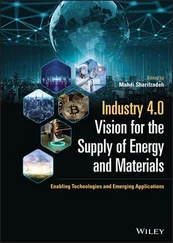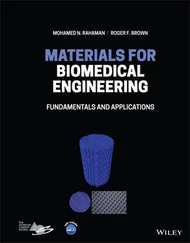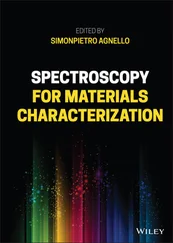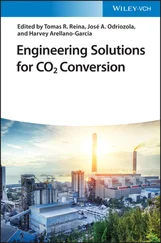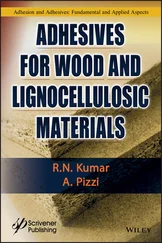29. Yang, J., Banerjee, A., Guha, S., Amorphous silicon based photovoltaics— from earth to the “final frontier”. Solar Energy Mater. Sol. Cells , 78, 1–4, 597–612, 2003.
30. Green, M.A. et al ., Crystalline silicon on glass (CSG) thin-film solar cell modules. Sol. Energy , 77, 6, 857–863, 2004.
31. Parida, B., Iniyan, S., Goic, R., A review of solar photovoltaic technologies. Renewable Sustainable Energy Rev ., 15, 3, 1625–1636, 2011.
32. Crabtree, G.W. and Lewis, N.S., Solar energy conversion. Phys. Today , 60, 3, 37–42, 2007.
33. Ferekides, C.S. et al ., High efficiency CSS CdTe solar cells. Thin Solid Films , 361, 520–526, 2000.
34. Kazem, H.A. and Chaichan, M.T., Effect of humidity on photovoltaic performance based on experimental study. Int. J. Appl. Eng. Res. (IJAER) , 10, 23, 43572–43577, 2015.
35. Al-Waeli, A.H. et al ., Comparison study of indoor/outdoor experiments of a photovoltaic thermal PV/T system containing SiC nanofluid as a coolant. Energy , 151, 33–44, 2018.
36. Yu, B. et al ., Performance study on a novel hybrid solar gradient utilization system for combined photocatalytic oxidation technology and photovoltaic/thermal technology. Appl. Energy , 215, 699–716, 2018.
37. Rahbar, K. et al ., Heat recovery of nano-fluid based concentrating Photovoltaic Thermal (CPV/T) Collector with Organic Rankine Cycle. Energy Convers. Manage ., 179, 373–396, 2019.
38. Zarma, I., Ahmed, M., Ookawara, S., Enhancing the performance of concentrator photovoltaic systems using Nanoparticle-phase change material heat sinks. Energy Convers. Manage ., 179, 229–242, 2019.
39. https://www.statista.com/statistics/263471/industrial-energy-consumption-worldwide/
40. https://www.irena.org/publications/2020/Mar/Renewable-Capacity-Statistics-2020
1 * Corresponding author: manimech019@gmail.com
2
Development of Solar Cells
Mohan Kumar Anand Raj, Rajasekar Rathanasamy* and Moganapriya Chinnasamy
Department of Mechanical Engineering, Kongu Engineering College, Erode, Tamil Nadu, India
Abstract
Nowadays, it is necessary to switch over from traditional fossil fuel power generation to alternative source power generation due to environmental degradation. Solar cell is a device which is used to convert sunlight into electrical energy directly through photovoltaic process. This chapter comprises classification of photovoltaic cells, and manufacturers of first second- and third-generation PV solar cells are listed. Additionally, a brief description of solar cells is given with schematic diagram as follows: single-crystalline PV cells, amorphous silicon PV cell, cadmium telluride PV cell, and copper indium gallium diselenide PV cells.
Keywords: Single-crystalline PV cells, amorphous silicon PV cell, cadmium telluride PV cell, dye sensitized PV cell, perovskite PV solar cells, polymer photovoltaic cell
BIPV - building integrated photovoltaic
PV - photovoltaic
TiO 2- titanium oxide
IC - integrated circuit
Solar energy is harmless energy, and heat from sun is utilized for developing different modern technologies, namely, solar thermal energy, solar water heating, artificial photosynthesis, and building integrated photovoltaic (BIPV). Power generation using photovoltaic system consists of photovoltaic module containing different quantity of cells and it is made up of photovoltaic materials. Different types of photovoltaic materials are used nowadays, namely, copper indium selenide, cadmium telluride, amorphous, and crystalline silicon [11]. Owing to increasing of non-polluting energy requirement, demand for solar PV module and cells has raised [24, 27]. BIPV is solar photovoltaic materials, which substitutes for building parts such as roofs and walls. Additionally, BIPVs function as dual role such as power production and parts of the building [28]. BIPV is having benefits compared to other systems such as separate area for system installation is not required. It saves building materials and reduces cost for mountings and accessories during assembly of system components [18]. Due to the various advantages, researchers show interest in BIPVs. The classification of photovoltaic solar cells is shown in Figure 2.1.
2.2 First-Generation PV Cells
Manufacturing of single connection solar cells is predominant compared to other solar cells; it is working based on silicon wafers which vary from single- to multi-crystalline silicon. This type of solar cells is called first-generation solar PV cells. Single crystal wafer silicon cell is majorly fabricated based on onscreen printing technology. Integrated circuit industry involves processing and mass production of PV cells. Different types of first-generation photovoltaic solar cells, manufacturers, power ranges, and efficiencies are listed Table 2.1.
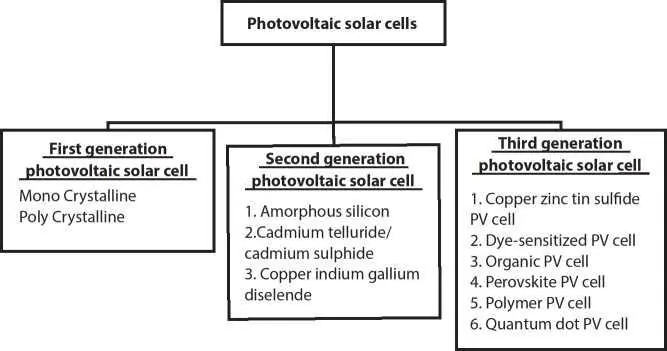
Figure 2.1 Classification of photovoltaic (PV) solar cells.
Table 2.1 First-generation PV cells.
| Company name |
Type |
Power range (W) |
Efficiency (%) |
| JS Solar |
Monocrystalline |
250–270 |
15.32–16.53 |
| Resun Solar |
Monocrystalline |
230–270 |
15.4–17.2 |
| ECO PV |
Polycrystalline |
300–320 |
15.45–16.49 |
| Shine Solar |
Polycrystalline |
270–290 |
14.1–15.1 |
| Sun Electronics Intern. |
Polycrystalline |
153.45 |
12.65 |
| CSG PV Tech |
Polycrystalline |
290–320 |
14.9–16.5 |
| Dokio |
Monocrystalline |
80–200 |
16.49 |
| Sky Energy |
Monocrystalline |
300–315 |
15.51–16.28 |
| TN Solar |
Monocrystalline |
185–205 |
14.5–16.1 |
2.2.1 Single-Crystalline PV Cells
The single-crystalline PV cells are started to use in power production since 1970. It is also called first-generation photovoltaic cell, and this type of technology is more reliable, durable, and good for long time power generation.
Figure 2.2displays schematic diagram of single-crystalline photovoltaic cells. PV solar manufacturing industry produces multi-crystalline photovoltaic solar cells from highly purified form of silicon. Chemical purification process has been employed for producing multi-crystalline solar cells, metallurgical silicon is used as raw material, and this type of process is also called as Siemens process. This process also involves refinement of unstable silicon compounds into stable silicon at higher temperature. It produces higher grade metallurgical silicon by using metallurgical technique as an alternative of chemical purification process. Multi-silicon contains less than one part of one billion impurities, which is known for less purity silicon grade. Multi-crystalline silicon comprises of small crystals, which gives materials in the form of wafer effects. The size of multi-crystalline solar PV cells is less than 1 mm. It is common type of PV cells, required nearly 5 tons of multi-crystalline silicon for producing 1-megawatt conventional solar unit. These multi-crystalline solar cells are different from single and amorphous crystals.
Читать дальше



